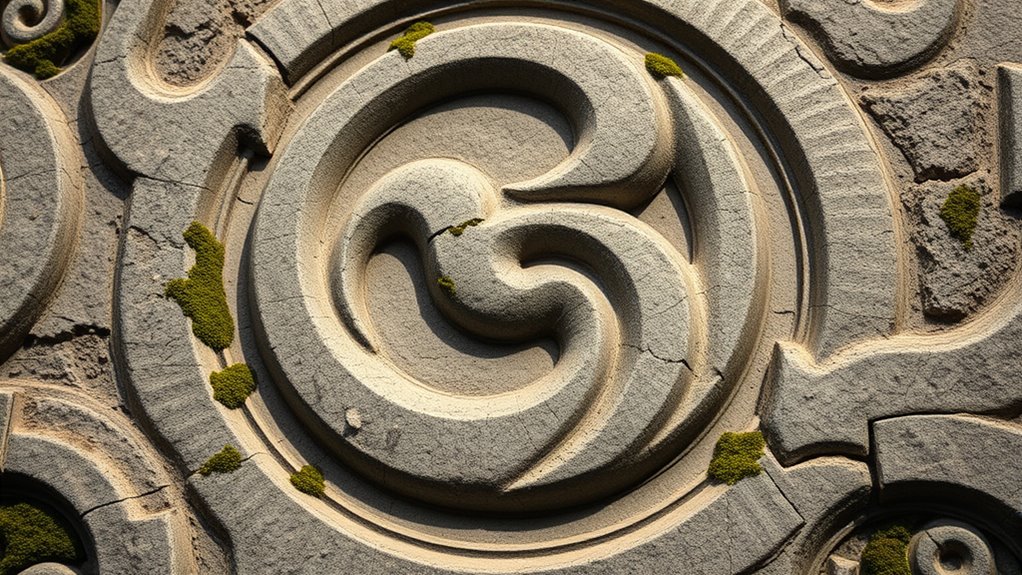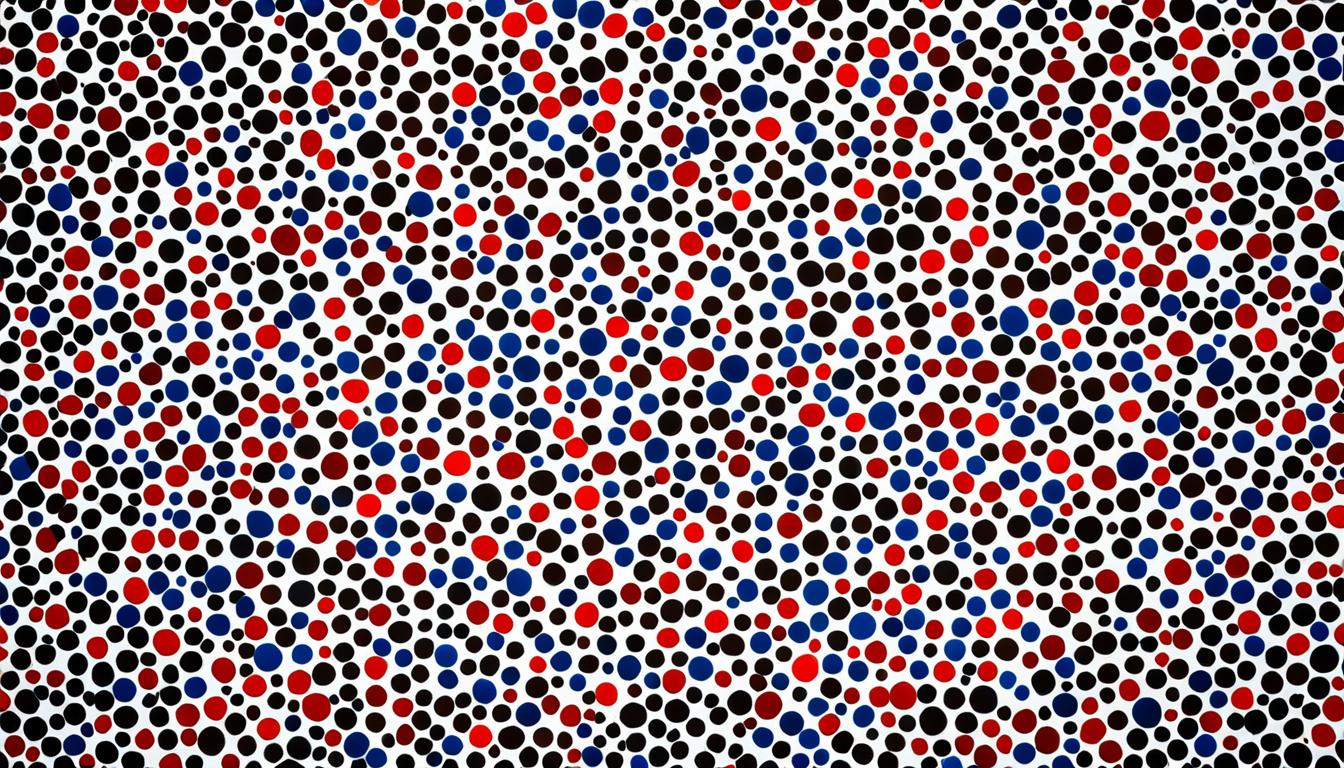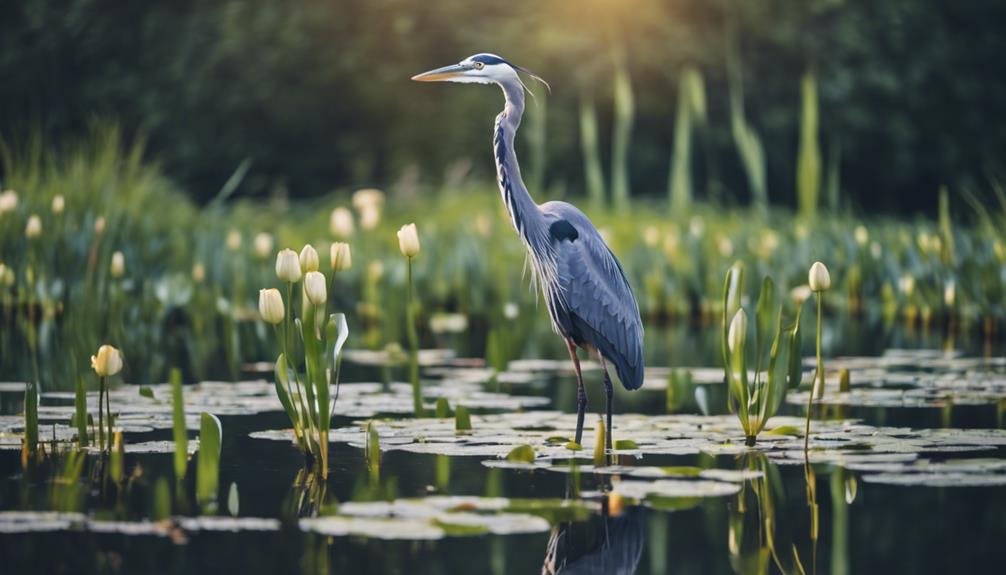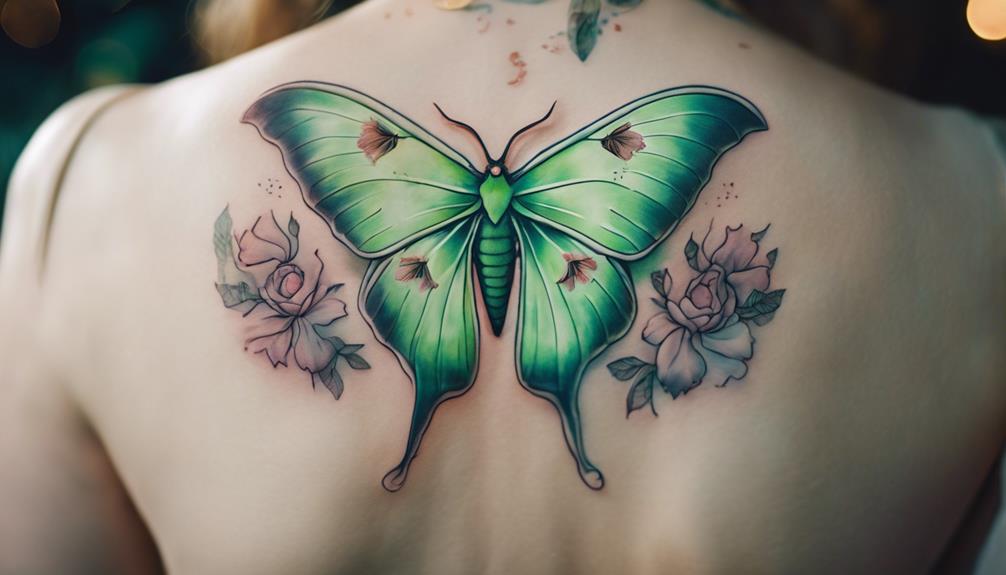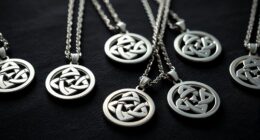The triskelion, or triple spiral, is a powerful Celtic symbol that represents motion, cycles, and spiritual harmony. You’ll find it in ancient art from regions like Ireland, Brittany, and Cornwall, where it embodies concepts like life, death, and rebirth. Its design signifies interconnectedness and ongoing transformation, making it a meaningful emblem of resilience and progress. If you explore further, you’ll uncover even deeper meanings behind this iconic symbol of eternal change.
Key Takeaways
- The Triskelion is a Celtic symbol featuring three interlocked spirals representing motion, progress, and cycles of life.
- It dates back thousands of years, originating in Celtic regions like Ireland, Cornwall, and Brittany.
- Symbolically, it embodies concepts such as life, death, rebirth, and the interconnectedness of mind, body, and spirit.
- Today, it is widely used in jewelry, tattoos, and spiritual practices as a reminder of transformation and resilience.
- The Triskelion signifies ongoing cycles of growth, change, and harmony within nature and human existence.

The triskelion symbol is a mesmerizing ancient motif composed of three interlocked spirals or legs, often representing motion, progress, and cycles. When you first encounter this symbol, you might feel drawn to its dynamic, flowing design, but understanding its meaning and origins reveals a deeper significance rooted in Celtic culture and beyond. Historically, the triskelion appears in Celtic art dating back thousands of years, particularly in Ireland, Cornwall, and Brittany, where it was used to symbolize concepts like life, death, and rebirth, as well as the interconnectedness of mind, body, and spirit. Its origins are believed to trace back to the Neolithic period, with similar motifs appearing across ancient Europe. Many scholars think it served as a powerful emblem of movement and transformation, embodying the perpetual cycles of nature, seasons, and human existence. Over time, the symbol has been adopted and adapted in various cultural contexts, but its core meaning remains consistent: a representation of ongoing motion and balance. In modern interpretations, the triskelion continues to symbolize progress and personal growth, often appearing in jewelry, tattoos, and spiritual practices. People see it as a reminder that life is a series of cycles—birth, growth, decay, and renewal—that push us forward through challenges and change. Some interpret it as a depiction of the three domains: land, sea, and sky, emphasizing harmony between different aspects of life and nature. Others view it as a triad representing mind, body, and spirit, encouraging holistic well-being. Contemporary artists and spiritual practitioners often use the triskelion to symbolize energy and movement, emphasizing transformation and resilience. Its versatility allows it to serve as a symbol of hope and renewal, especially during times of change. You might find it inspiring as a visual reminder that progress isn’t linear but cyclical, and that each phase leads to growth. Its modern use in various contexts underscores its timeless appeal and universal message. Whether as a decorative motif, a spiritual emblem, or a personal talisman, the triskelion continues to resonate because it captures the essence of motion and change that’s fundamental to human experience. Its rich history and evolving interpretations make it more than just an ancient symbol—it’s a powerful reminder that progress is ongoing, and cycles are an integral part of life’s journey.
Frequently Asked Questions
What Are the Origins of the Triskelion in Ancient Celtic Culture?
You might notice that the origins of the triskelion trace back to ancient rituals in Celtic culture, where it symbolized motion, progress, and cycles. Its design reflects celestial symbolism, representing the sun, moon, and stars, which were essential in their spiritual beliefs. This powerful symbol was believed to connect the earthly and divine domains, serving as a protective emblem and a reminder of life’s continual movement and transformation.
How Is the Triskelion Used in Modern Celtic Spiritual Practices?
In modern paganism, you often see the triskelion used as a powerful spiritual symbol representing balance, progress, and the cycles of life. You might wear it as jewelry or incorporate it into rituals, feeling its deep connection to Celtic spiritual symbolism. Its dynamic form helps you focus on personal growth and transformation, making it a meaningful emblem of your spiritual journey and honoring ancient traditions in contemporary practice.
Are There Different Variations of the Triskelion Symbol Across Celtic Regions?
Yes, there are regional variations of the triskelion symbol across Celtic regions. You’ll notice stylistic differences, such as the number of spirals, their orientation, and decorative details that reflect local artistic traditions. For example, Irish triskelions often feature simpler, symmetrical designs, while those from Cornwall or Brittany may include more elaborate patterns. These variations highlight how different Celtic communities personalized the symbol to suit their cultural identities.
What Are the Symbolic Meanings Associated With Each of the Three Spirals?
Imagine uncovering a secret of cosmic balance and spiritual growth through the triskelion’s three spirals. Each spiral symbolizes a crucial aspect: the first represents life’s continuous journey, the second reflects the flow of energy and progress, and the third embodies harmony and enlightenment. Together, they guide you toward understanding the interconnectedness of existence, inspiring inner growth and a deeper connection with the universe.
How Has the Triskelion Influenced Contemporary Art and Design?
You see the triskelion’s influence in contemporary symbolism and modern aesthetics through its dynamic, balanced design. Artists and designers incorporate its triple spiral to evoke motion, growth, and interconnectedness, giving their work a sense of ancient wisdom with a fresh twist. Its versatile form adapts seamlessly to logos, jewelry, and architecture, making it a powerful symbol that bridges historical Celtic meanings with today’s visual culture.
Conclusion
You might be surprised to learn that the triskelion has appeared in over 200 ancient Celtic artifacts, showcasing its enduring significance. As you explore this symbol, remember it represents motion, progress, and the interconnectedness of life. Its intricate design continues to inspire artists and mystics alike. By understanding its history, you gain a deeper appreciation for Celtic culture’s rich symbolism, reminding you that some symbols truly stand the test of time, evolving while maintaining their core meaning.

